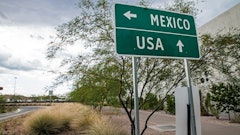Last week in San Antonio where a 15-member panel charged by Congress with advising the Agriculture Department on its organic food standards discussed rules, little did anyone know that it would turn into a social event. The start of the meeting Tuesday was delayed for roughly an hour when a half-dozen consumer advocates blocked the panel with a sign that read “Safeguard Organics” and chanted “Don’t change sunset.”
This Politico article details what happened at the event in Texas last week, where the National Organic Standards Board debated what exceptions are allowed under the green and white “USDA Organic” seal on packages in the grocery store and how much longer they should remain and how best to get rid of them.
At the crux of the protestors’ complaints is a long-standing issue within the organic industry: the pace at which non-organic and synthetic materials should be removed from the program.
When the organic standards were first crafted in the 1990s, Congress and USDA recognized that the program would have to allow for the limited use of some non-organic materials that are deemed not to have health or environmental risks, at least initially, until alternatives could be found.
The issue has come to a head following a September decision by USDA, made without the opportunity for public comment, to change the board’s method for reviewing the way it allows for the continued use of synthetic and non-organic materials in organic products. While all such materials will still undergo review every five years, it will now take a two-thirds vote of the board to remove each item from the list of what is accepted.
“It’s a thorough and transparent review process for all substances,” allowing for two public comment periods, Miles McEvoy, undersecretary of USDA’s Agricultural Marketing Service and head of the NOP, explained at the San Antonio meeting in defense of the move. Overall, the change “simplifies the process,” he said.
To read more, click HERE.

















